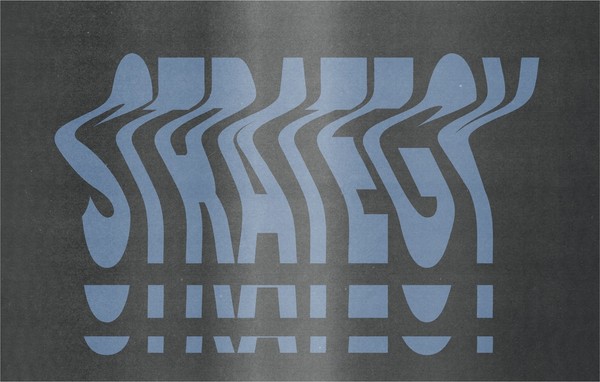Everyone's Stealing & Let's Experiment | My time at Converge SE 2015
By:
Emilee Dover
on 8/5/2015
The last few years, I’ve attended SXSW Interactive to fulfill my yearly stipend of professional knowledge gain. I decided that 2015 was the year I looked for something different– a more intimate conference with active conversations. I found ConvergeSE. And after reviewing the impressive list of speakers, I purchased my ticket to Columbia, SC.
Unlike other conferences that I have been to, I never felt like there wasn’t a session that seems interesting. Generally, the speakers dove in far enough to keep interest, but shallow enough to apply to a wide variety of professionals. Most of the sessions I attended followed the Design track, but you could find your seat in Business, Frontend, or Development sessions as well. No special badges or registration needed. I found myself wishing that my colleagues had attended– so that Joe and I could talk about this process or that Jason could meet so and so. Some talks were inspiring, some were bluntly realistic, some were a group therapy circle.
There were 2 major themes in the many of the sessions I attended:
- Everyone’s stealing. We are all creating similar work. Very few of us attribute it. If we work together we can make bigger, better things.
- Learn how to break your ideas up before they eat you alive. Experiment and learn.
Everyone’s stealing. We are all creating similar work. Very few of us attribute it. If we work together we can make bigger, better things.
Noah Stokes began his session by showing examples of homepage designs. All from various brands, but all telling the same story visually.
Carl Smith from nGen Works said “If no one is stealing from you, be worried. There must be nothing worth stealing.” He also talked about the beauty of liner notes. Why don’t we give pay tribute to our influences and people that inspire us in this way?!
@emdove2 Tributes are so cool. Praise people who make you stronger! Thanks, Emilee!
â Carl Smith (@carlsmith) April 15, 2015
Steve Jobs once said that good ideas come from collected experiences. If we work together, we can create bigger and better things. Garth Braithwaite shared ways that designers can open source. “We need to remove the stigma of stealing because we are all doing it,” said Braithwaite. He urged the room to find ways to band together.
To this I asked, but how can I open source design work that is proprietary to the client? How do I get better feedback in my small internal circle? Wren Lanier suggested sharing work with the team as you go. The whole team. Collect insights from others and expand the feedback loop to be more organic. She mentioned that when you don’t involve the team, you are asking to go it alone.
Learn how to break your ideas up before they eat you alive. Experiment and learn.
As designers and art directors, we know that the brand focus needs to tell a story. Often times we get overwhelmed with the expanse of that landscape and the magic of the thing we want to make. We start letting the potential of our ideas crush us. Several speakers touched on how to overcome this beast while paying most attention to our users.
Samantha Warren‘s session was called Mind the Gap: Becoming a better designer by owning your blind spots. She shared this Ira Glass segment on storytelling. And explained there is an argument for quantity over quality: get in the habit of making to get the âshit’ out of the way.
“I’m a designer. I analyze things constantly in my head.” –@samanthatoy #ConvergeSE
â Wren Lanier (@heywren) April 15, 2015
Warren and Elyse Holladay both talked about ways to break down the daunting tasks in front of you. Holladay asked, “Why do we say âI’m not good at this’ instead of âThis challenges me’?” By finding ways to make an adventure of out every step of the process, you can start to digest it better. In Samantha’s analogy, she mentioned looking across a canyon to your goal on the other side. Getting to that other point seems like such an impossible task as the beginning. But if you think about each small step as a journey instead of the amorphous finish line, you can find which path to walk down.
Wren Lanier also talked about how this mentality relates to approaching clients. We have to learn how to approach things entrepreneurially. Lanier said to “start experimenting and explain it that way. AS AN EXPERIMENT. Hypothesize, build, and test.”
#convergese @wiseacre’s lesson on balancing your user feedback.
A photo posted by emdove2 (@emdove2) on Apr 16, 2015 at 12:00pm PDT
Paul Armstrong‘s experiences with Choremonster taught him to hypothesize instead of assuming. “Realize that the expectations with be different from person to person. Some will have an open hand, and some a closed fist. Learn to balance feedback and split it into what is valuable and what isn’t.”
As a team, we are experimenting with a few of these ideas in our shop. The dates for ConvergeSE haven’t been set yet, but I am excited to see what is in store for 2016.
Related Posts
Where Do We Start? The Technical Audit
By: Kim Clark on 3/15/2010
Any solid SEO program should begin with at technical audit of your website.
Read More »VIA Studio Joins Google Apps Authorized Reseller Program
By:Jason Clark on 3/25/2010
VIA Studio today announced it has become an authorized reseller of the Google Apps suite of communication and collaboration tools. VIA Studio provides setup, integration & support services for businesses and organizations using Google Apps.
Read More »
